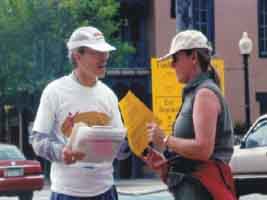

Landis Evans + Partners, formerly Sprinkle Consulting, led a major multi-year research initiative, funded by the Florida DOT, which resulted in the creation of a suite of powerful planning tools. This enables planners to forecast the number of people a bicycle or pedestrian facility will attract, and test alternative facility options and surrounding land development scenarios based on measurable characteristics of the travel corridor(s). The first phase of the project involved extensive stakeholder and focus group outreach intertwined with evaluations of past research (modeling) structures from around the world. Predictive methods were then developed for metropolitan transportation corridors and data was collected over a variety of roadway corridors and from motorists, bicyclists, pedestrians and transit riders via travel intercept and mail-back surveys. Landis Evans staff compiled the survey responses together with the socio-demographic data and facility-specific geometric data, to create statistically reliable, and easy-to-use mathematical models predicting the number of people who would walk or ride bicycles for travel and recreation in a given corridor when the new facilities are built. By applying these predictive methods based on sound research and model creation, communities can now conduct future year scenario testing and develop and test corridor plans in a way that will enable the community or agency to provide facility networks that promote transit, walking and bicycling, and thereby promote energy conservation and enhance the future quality of life.